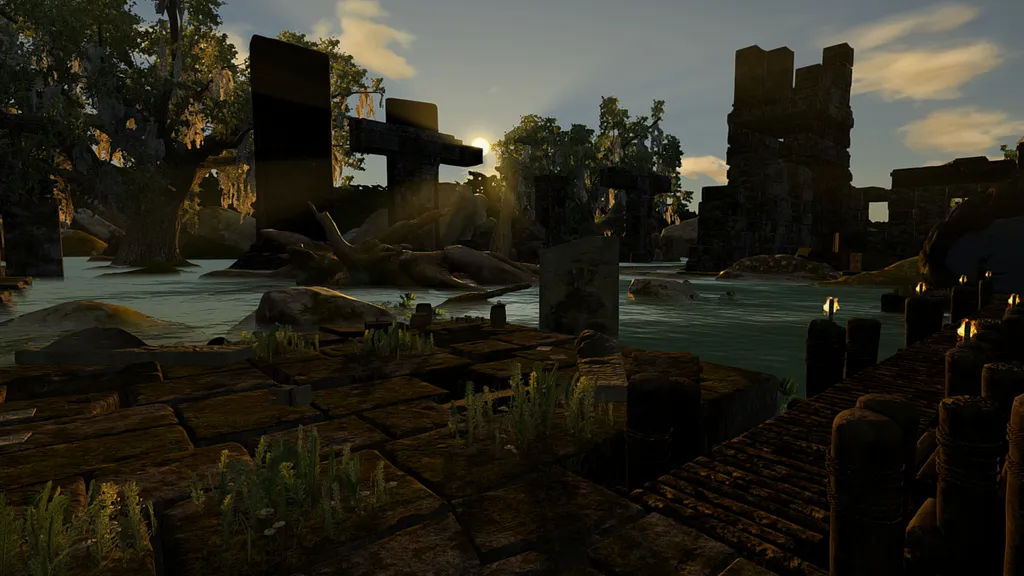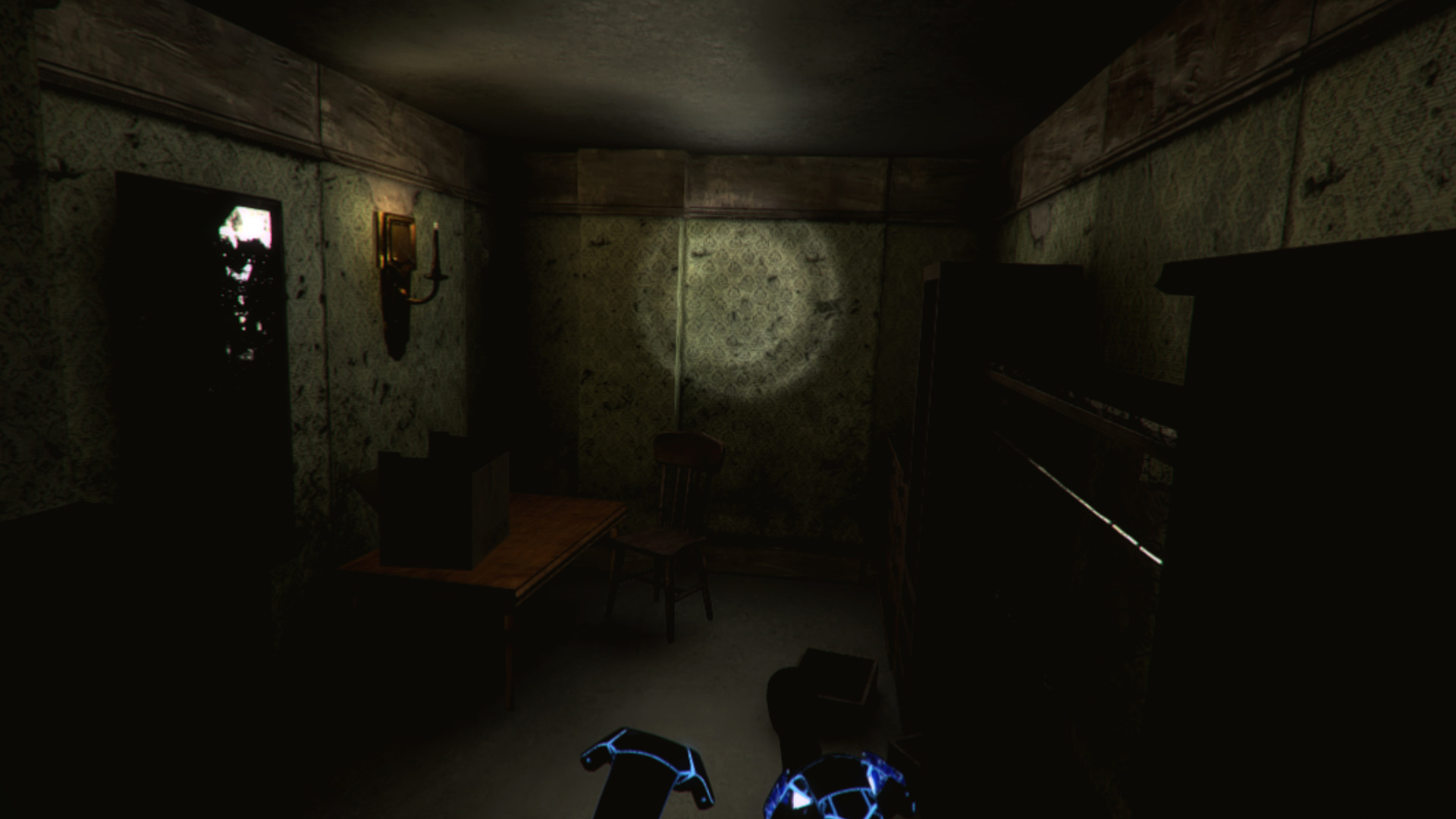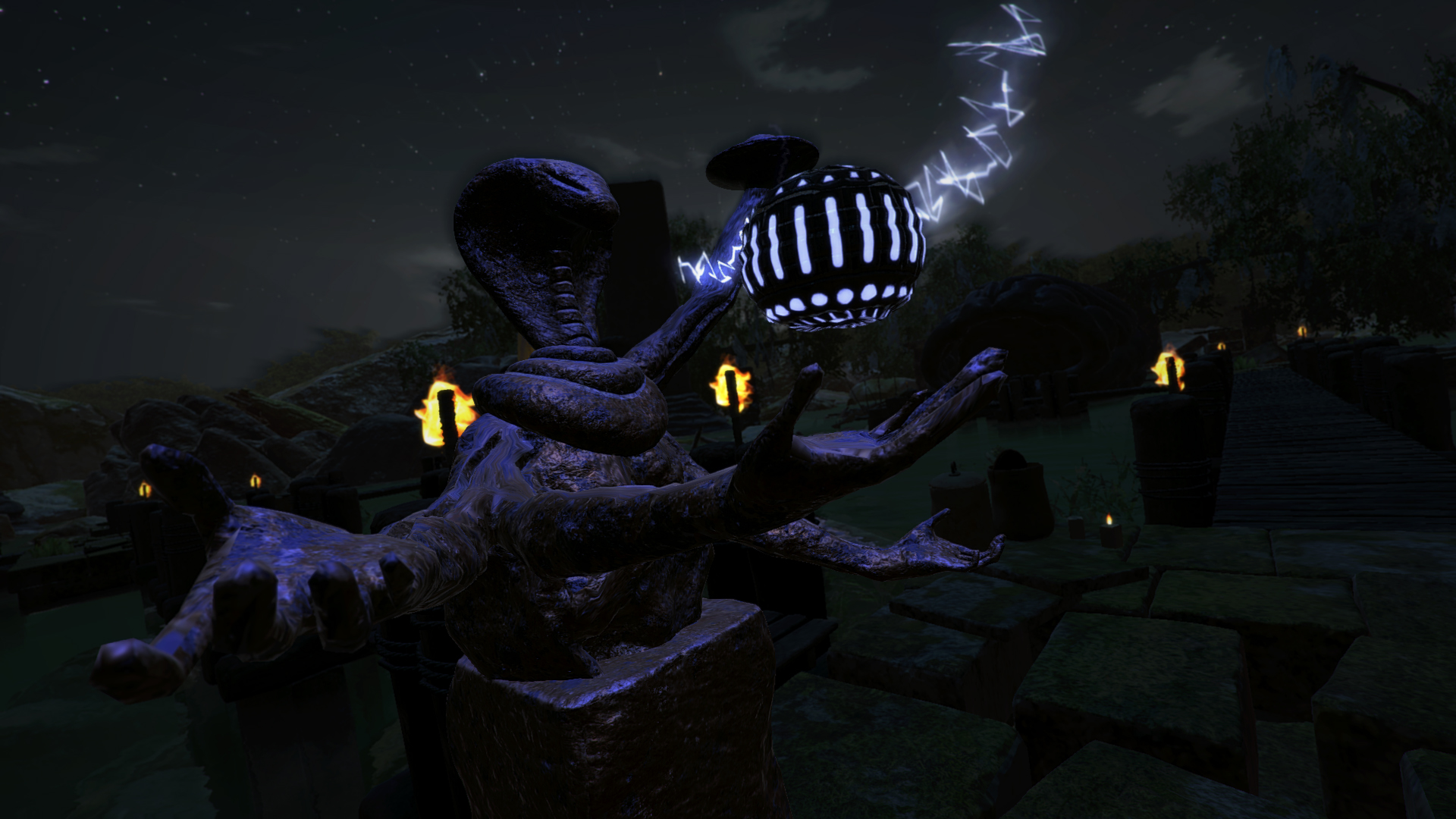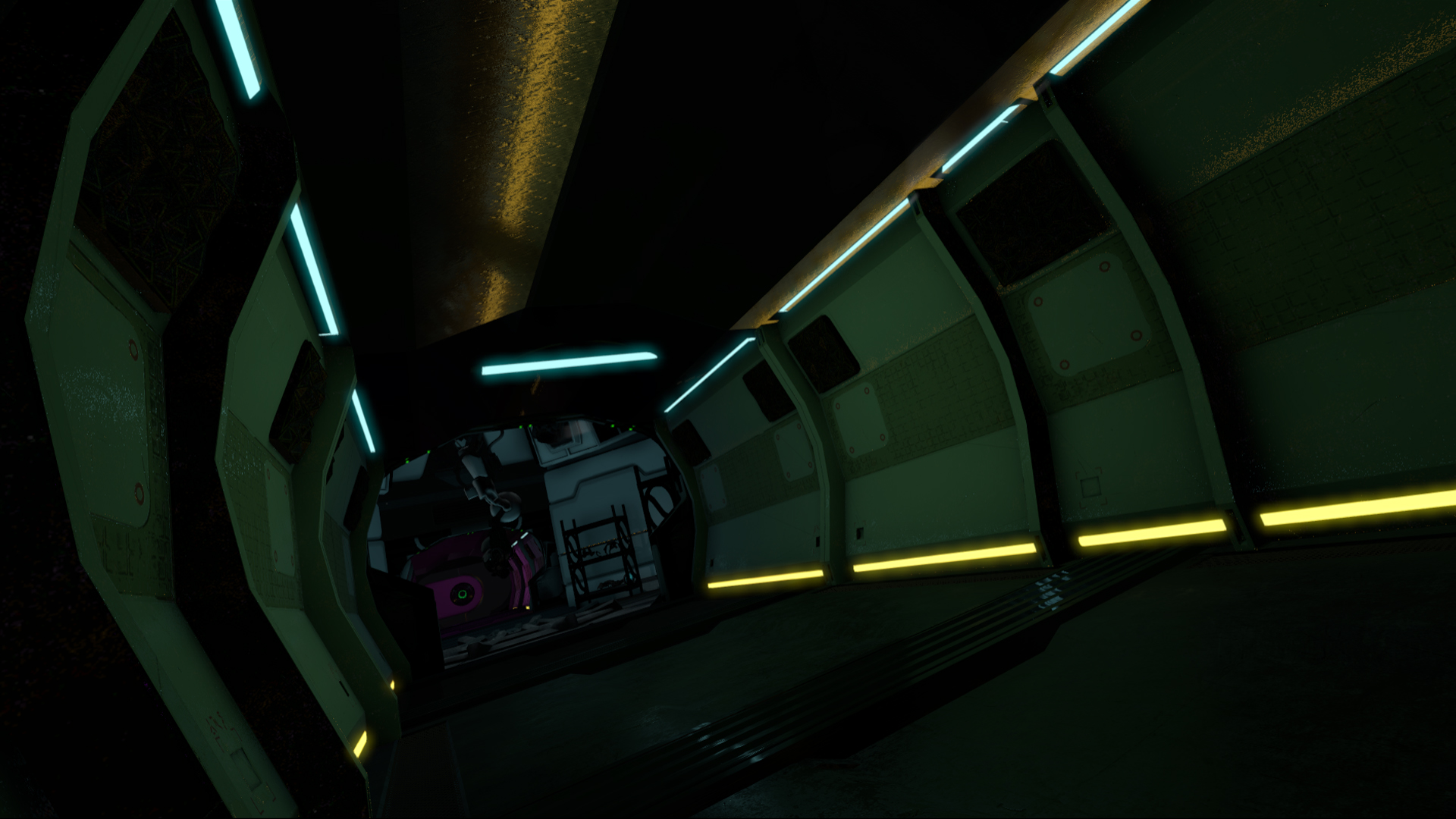If I’d played SVRVIVE seven months ago with my HTC Vive fresh out of its box, me being eager to play just about anything in a roomscale environment, it might have been enough. The simple thrill of walking around in VR and being able to pick up objects with the Vive wands may well have pulled me in for the few hours this experience lasts and enthralled me, even with the often frustrating puzzle solving.
But we’re not in April anymore.
Lots of developers have done amazing things with the hardware. We’ve played online military shooters, built fantastic contraptions, met with Gnomes and Goblins, and more. The simple thrill of using the Vive headset and its controllers isn’t enough anymore, and that makes this escape room puzzler decidedly dated and shallow.
SVRVIVE starts out with promise. In its opening minutes, put simply, you die. But it’s not game over; you’re granted a second chance at life, so long as you can assemble different parts of the Deus Helix. That involves travelling to different worlds and solving a series of challenges. You’ll venture to alien worlds, thick jungles and run-down apartments, exploring every inch of every environment for clues about exactly how you’re meant to proceed.
The range of locations makes SVRVIVE a tonally strange game. In the first level, where I stepped on creaky floorboards and searched in the dark, I was convinced that this was a survival horror experience. When no scares came and in the next level I found myself in an elaborate neon city, I thought it was sci-fi. On one hand, the random locations made it fascinatingly unpredictable, as I was always guessing where I was going to go next.
But there’s also a certain drabness to the environments that make them utterly uninteresting to explore. Everything looks like it was taken from the Unity asset store, for one thing. Textures are plain and hurt what could have been some interesting art direction in some of the more imaginative environments. Despite the variety in design, it’s all lackluster and uninspired.
Sadly, those are two terms that fit the gameplay pretty well too. SVRVIVE essentially consists of walking around environments, picking up objects, and finding some use for them. It’s trial and error gameplay at its most tedious. In the first level for example, you’ll find an axe but won’t be able to cut open the vent holding the item you need, just the door to the screw driver that will unlock it. In the second you’ll find a series of strange objects that slot into holes in a wall. There’s no difference between them, it’s just a case of trying each item with each hole until they slot in place.
Making matters worse is the fact that many environments are just simply too dark. I often felt like I was just stumbling around squinting for hints, and I found progress-halting bugs that I could replicate by doing things out of the order they were meant to be completed in.
At one point, I stood for what must have been half an hour trying to replicate a musical pattern. It sounded simple but I just didn’t have any success no matter how much attention I paid to the tune. I just wasn’t having any fun.
SVRVIVE doesn’t have any ingenuity to its puzzles, it just has a lot of random obstacles that you’ll spend a long time time to solve before you progress. Perhaps there’s an audience for that type of product, but I’m willing to bet most that try their hand at SVRVIVE will leave as frustrated and bewildered as I was.
Escape room games are relatively popular in VR, but SVRVIVE is one of the most frustrating and inessential I’ve played. With puzzles that frustrate in their obscurity, environments that are murky and joyless to explore, I can’t find a good reason that anyone would want to play this disappointing game unless the escape room concept is too appealing to ignore for your personal tastes.
Read our Game Review Guidelines for more information on how we arrived at this score.





























